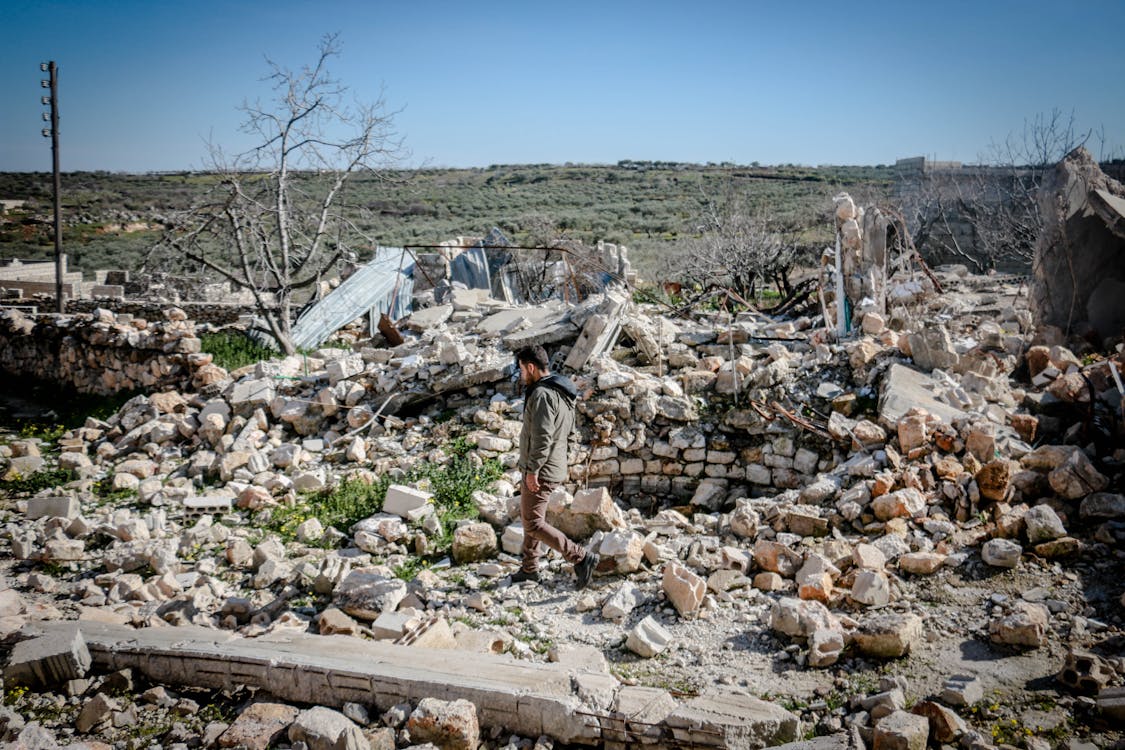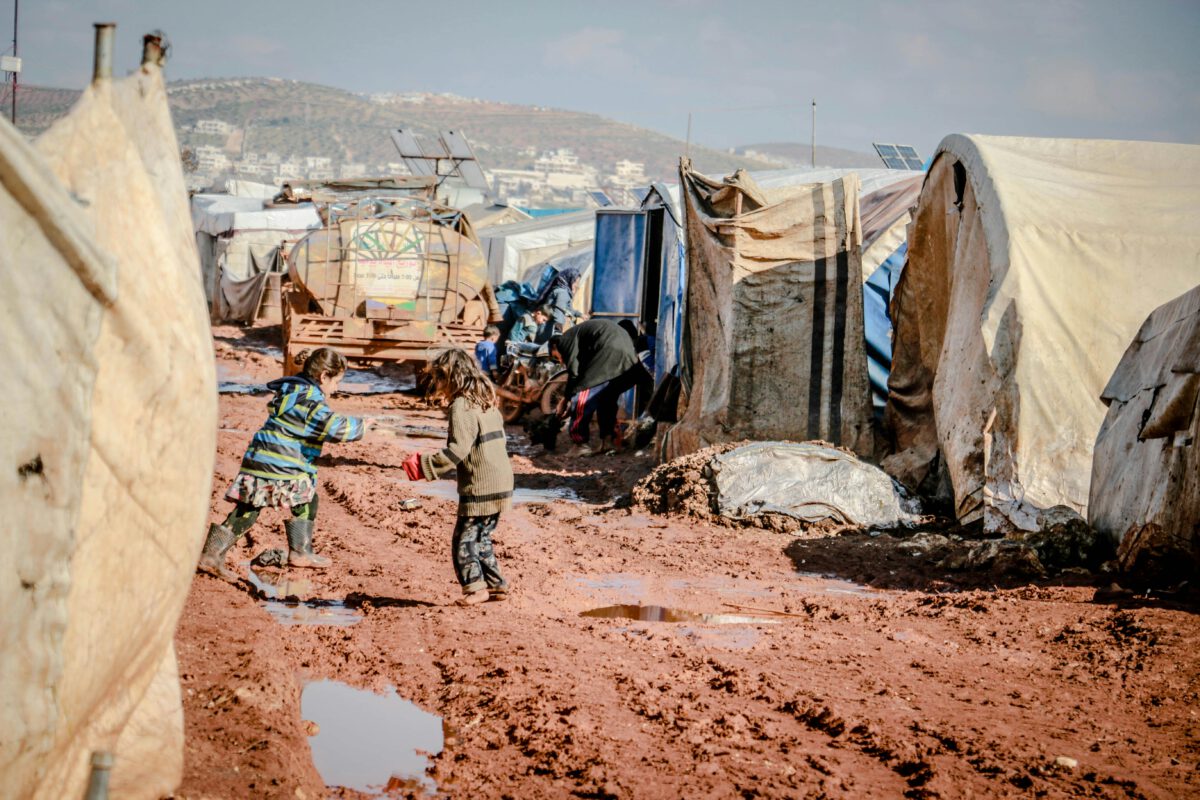Civil war has been raging in Syria since 2011, with almost three quarters of the population dependent on humanitarian aid as a result. The situation has deteriorated even further this year following the devastating earthquake in February, which affected almost 8.8 million people. The conflict also continues. As recently as October, the Syrian government once again Air strikes against Idlib and western Aleppo which led to 50 deaths and over 70,000 displacements and caused considerable damage to infrastructure.â The European Commission is providing relevant sums for humanitarian aid in Syria via DG ECHO. However, there are always doubts as to whether the aid deliveries are actually reaching the people who need them most urgently or are rather playing into the hands of Assad and his troops and what role sanctions are playing in this.
Highest number of fugitives in the world
The civil war in Syria has become one of the largest refugee movements worldwide: 6.8 million Syrians have left the country, mostly to neighboring countries. A further 6.7 million have been displaced within the country over the past twelve years of civil war. Half of the Syrian population is therefore fleeing war and persecution, and a safe return is still unthinkable. The proportion of Syrians in the global number of refugees is 20%.
Humanitarian situation
On June 14 and 15, 2023, the 7th Brussels Conference in Support of Syria and the Region took place. In addition to the UN, the EU institutions, 57 countries and over 30 international organizations took part. A total of €4.6 billion was pledged for 2023 and a further €1 billion for 2024. The conference is the most important donor conference for Syria and the region. Since the outbreak of the civil war in 2011, the EU and its member states have contributed almost 30 billion the largest donors for Syria and the region.
9 out of 10 Syrians live in poverty, 12.4 million people are affected by food insecurity. People can barely afford even basic foodstuffs because prices have risen by 800% in the last two years. The north of Syria is also suffering from massive Drinking water shortage and contamination. There are many reasons for this. For example, droughts caused by climate change have led to historic low water levels in the Euphrates and other rivers, and wells have dried up. In addition, armed troops sometimes obstruct access to springs. Poor wastewater management leads to drinking water pollution and Cholera scone.
Border crossings in northwest Syria
A fundamental problem in Syria is access to the regions that are not under the control of the Assad regime, particularly in the north of the country. Thanks to an agreement with the Syrian government, aid deliveries for the north-west of Syria were able to cross the Bab al-Hawa border crossing in September of this year. be resumed. Russia had previously announced the extension of the opening of the border post with Turkey on July 11, 2023 with a Veto in the Security Council blocked by the United Nations. The border post was established by the Security Council in 2014 and has had to be extended every 6 months since then. In the rebel-held area, 90% of the 4.5 million inhabitants are dependent on humanitarian aid.
The crossing is therefore essential for supplying the population in north-western Syria with food and medicine, among other things. In addition to the Bab al-Hawa border crossing, the openings of the crossings in Bab al-Salam and Al-Raâee, which could be used again after the earthquake in February, have also been extended. However, only around 20 % of the aid convoys reach the region via the latter. Assad's ally Russia is trying to exert pressure on the rebel areas and increase Assad's influence through repeated blockades in the Security Council. The EU has rightly spoken out against this approach in the past Critically evaluatedas it massively restricts the provision of humanitarian aid to the many people in need.
Approach by Erdogan and the Arab League to Assad
The Turkey and Syria have been slowly approaching each other again since the winter of 2022. At the same time, Turkey is continuing airstrikes on Kurdish targets in northern Syria, which are also destroying civilian infrastructure. A rapid normalization of relations is considered unlikely, as the central objectives do not appear to be compatible. Turkey and Erdogan want more Syrian refugees to return to Syria, but Assad is resisting this. He would like to recapture all areas still held by rebels if possible, whereas Turkey does not want to lose its influence in northern Syria and fears new migration movements in the event of a regime offensive.
Assad was recently reinstated after twelve years. Arab League admitted and took part in its summit in Saudi Arabia in May. The member states of the Arab League hope that the resumption will lead to greater stability in the region. At the same time, there is talk that Assad's resumption is linked to conditions that are not public. Informal sources say that Assad has been promised investment by Arab states in the reconstruction of Syria if, in return, he allows many of the Syrians who have fled to live in Syria again, initiates a reconciliation process and stops producing the drug "Captagon". The EU in April 2023 Sanction measures imposed. In contrast to other confederations of states, the EU No sufficient reasons for movement for a normalization of relations with Syria. This also means that development cooperation remains suspended.
Misuse of humanitarian aid in Syria
Most of the money that the EU provides for Syria goes directly to UN organizations working on the ground. After the devastating earthquake at the beginning of February, there was information for the first time that the UN might open an office in the rebel-held Northwest Syria could open upbut this has not happened so far. Instead, aid has so far been coordinated via offices in areas under the control of the Syrian regime or in Turkey. In the past, there have been repeated allegations that the Assad regime UN organizations prescribes where aid may be providedunder threat of otherwise withdrawing visas. There were also accusations against the United Nations in February, when aid for the areas worst affected by the earthquake was very slow to arrive and the population was left to fend for themselves for days. Assad and his regime had repeatedly denied the Access to rebel areas preventedto starve the population and force the rebels to surrender.
Assad controls aid
Since the earthquake, Assad and Putin have repeatedly presented international sanctions as the main obstacle to humanitarian aid, which is explicitly excluded from all sanctions regimes. After a comprehensive Study by Natasha HallThe Assad regime has set up the aid structures in such a way that they are under its sole control. Almost all international organizations and aid facilities must be under the supervision of the "Syrian Arab Red Crescent" and the "Syria Trust for Development". This allows the regime to control and misappropriate aid organizations and the flow of aid across the board. In addition, the regime repeatedly abuses the exchange rate mechanism and changes it so that it can pocket large amounts of financial aid or allocate it to loyal supporters.
Recommendations for action Humanitarian aid in Syria
A large proportion of the people in Syria are dependent on humanitarian aid. However, relief supplies and financial aid may not be brought to Syria or distributed in Syria with contractual partners who have already been involved in Misappropriations involved or are under the direct control of the Assad regime. In addition, civil society should be more involved in the process of allocating humanitarian aid. Independent and local civil society organizations must be supported financially and technically to a greater extent. The inclusion of Refugee-led organizations (RLOs) can make a major contribution to this.
Tying aid to conditions
Early recovery, i.e. humanitarian aid that also focuses on longer-term strategies to improve the situation on the ground, is also a sensible approach in a long-standing conflict. However, it is important that this is linked to strict conditions. These include a principled and conflict-sensitive approach, ongoing independent monitoring and accountability, local ownership and a „whole of Syria approach“.
In order to counter situations such as the one in the Rukban refugee camp (north-west Syria, Daraa province), where thousands of Syrians have been stranded in the desert on the Jordanian border for years without access to medical care and humanitarian aid, it must be possible to provide aid on a permanent basis, without the consent of the regime or a UN mandate and without uncertainty about the opening of border crossings. The EU must also use all diplomatic means to achieve this.

